Parque forestal la marquesa: Go For a Walk in La Marquesa Forest Park
En 2023 reapertura del parque forestal La Marquesa de Guaynabo – NotiCel – La verdad como es – Noticias de Puerto Rico – NOTICEL
MUNICIPIOS
Por:
Leoncio Pineda Dattari
Publicado: Aug 22, 2022 05:45 AM
A casi cinco años de su cierre debido al paso del huracán María, en 2017, el alcalde Edward O’Neill Rosa informó que los trabajos de reacondicionamiento podrían demandar hasta $4 millones de dólares
La entrada del parque forestal de 600 cuerdas.
Foto: Facebook
En enero de 2023 se contempla la reapertura de uno de los principales pulmones verdes del municipio de Guaynabo: el parque forestal La Marquesa, de 600 cuerdas, que a partir de septiembre de 2017 se mantuvo cerrado luego del paso del huracán María, ciclón que destruyó parte de las instalaciones.
La información la dio a conocer el alcalde Edward O´Neill Rosa, quien detalló que los costos del reacondicionamiento de la instalación podrían alcanzar los $4 millones de dólares.
O´Neill Rosa recordó que “el parque forestal La Marquesa lo cogimos completamente en abandono. Se cerró y estaba todo abandonado. Ahora se han vuelto a hacer sus caminos, están hechas sus veredas, está limpio, está pintado, se repararon los pasamanos de los gazebos. Había una sombrilla en una de las instalaciones y vamos a poner galvalum ahora mejor para que dure un poco más y se le pueda dar más fácil mantenimiento”.
Sobre lo que queda por delante, manifestó que “vamos a reparar el aviario y el restaurante, que fue el más que sufrió daños”.
Respecto de las aves, aseguró que “todavía están ahí. Lo que hicimos fue que como el aviario se dañó, se hizo algo improvisado, se cerró el restaurante y los tenemos ahí sueltos, dentro del restaurante”.
“Ahora estamos terminando el proceso para comenzar la subasta. Y ya tenemos el dinero de FEMA, que está obligado”, afirmó.
En cuanto a los dineros para financiar los trabajos de mejoramientos, el primer ejecutivo municipal contó que “terminamos de negociar con una aseguradora y ese dinero llegará ahora. El municipio se iba a una demanda con la aseguradora, pero nosotros cuando llegamos comenzamos a hablar con ellos en mayo y ya en agosto habíamos cerrado todo. Llegamos a un buen acuerdo”.
El municipio se iba a una demanda con la aseguradora, pero nosotros cuando llegamos comenzamos a hablar con ellos en mayo y ya en agosto habíamos cerrado todo. Llegamos a un buen acuerdo”.
Además, adelantó que “si falta algo de dinero, lo pondría el municipio”.
O´Neill Rosa dijo que hubo un cambio de planes en torno a la reapertura del parque forestal: “se iban a abrir en junio unos senderos para caminantes, pero como recibimos los pagos, dije vamos a abrirlo (el lugar) completamente. Esperamos ya que para enero o febrero estemos abiertos. Totalmente abiertos. En este momento no está funcionando, estamos haciendo arreglos, dándole mantenimiento, hay una torre que estamos reparando también, porque hay una parte oxidada, a todo eso se le está dando mantenimiento, cosa que cuando hagamos la subasta sea únicamente lo del restaurante y lo que es el aviario. Vamos a abrir todo junto y el plan es enero”.
En el parque forestal funcionaba un trolley, teleférico, un aviario, el mariposario y el “Forest Park Café”.
También está la torre de observación de 70 pies de altura sobre la cima del parque.
Alrededor de la torre había merenderos y áreas recreativas para los niños.
Asimismo, funcionaba un “zipline” y el primer ejecutivo municipal planea construir un salón de actividades, que no había en el lugar.
El alcalde rememoró que el parque forestal era “autosuficiente” y aseguró que, cuando funcionaba, dejaba solo en entradas $1.3 millones de dólares, una información diferente a la entregada por el exalcalde Ángel Pérez Otero en 2019, quien señalaba que los gastos sobrepasaban a los ingresos de forma exhorbitante y que por eso buscó en su momento una Alianza Público Privada (APP), lo que nunca se consumó ya que fue detenido y procesado por corrupción.
Leoncio Pineda Dattari
© 360 TELECOM CORPORATION
Guaynabo – Parque Forestal la Marquesa
- This shows you the cable car that is not in use and gives a hint of the view of San Juan
Saturday (February 2, 2013) we spent about 4 hours in The La Marquesa Forest Park in Guaynabo. We went to take pictures and as you will see, there were plenty of pictures to take. I wish that I could recommend this park as a tourist destination, but I can only do that with some strong qualifications.
We went to take pictures and as you will see, there were plenty of pictures to take. I wish that I could recommend this park as a tourist destination, but I can only do that with some strong qualifications.
The road to the park is very scenic and pretty and the promise of an adventure is strong and enticing. the place is very clean and there is ample parking. Our first disappointment was that the cable car system that takes you to the top of the mountain, where the butterfly garden and the aviary are, is out of order. Instead we took a little trolley-train. That wasn’t a bad thing, just not what we had hoped for. And due to the numbers of people who had to be transported this way, it was a bit of a wait, and then our group was split up, with the first group having to wait almost 20 minutes for the second.
- Newly emerged in the incubator portion of the exhibit
At the top you discover a work in progress. The butterfly garden and the aviary are built and functioning, but the rest of the building is empty and there is no place to get even a bottle of water. (That is something that I think a first class tourist destination should have. I understand that they do not want any food in the butterfly garden – that would attract ants – ants would eat the butterfly larva … but something! Especially, because as I will discuss later, this is a place to bring children.)
(That is something that I think a first class tourist destination should have. I understand that they do not want any food in the butterfly garden – that would attract ants – ants would eat the butterfly larva … but something! Especially, because as I will discuss later, this is a place to bring children.)
- One of the few fully emerged and living butterflies in the garden at the time we went.
Once our group was reassembled we were ushered into a room to watch a film about butterflies. Good, right? Not exactly. The film was of very poor quality visually (as are the ads shown in the movie theaters here), the sound quality was terrible, the presentation was boring and deliveryed in big words and a monotone (remember those children I mentioned – to a one they were bored and squirming). It was also only available in Spanish. More than half the people in the room with us watching did not speak Spanish (and those that did were horrified by anglicisms like “flasheo” for flash – as in flash pictures).
We exited the movie into the butterfly garden. I think there might have been 10 all together, including the dead ones in the water. It was very disappointing. Our leader told us that a couple weeks before when he had visited the place was full of butterflies: That means you should check before you go to find out how many you can expect to see – there is obviously a cycle thing going on. The preview film would lead you to believe that you are going to see all kinds of fantastic native butterflies. Maybe you do when there are lots of them. All we saw were monarchs. (Oh, and a grasshopper!)
- This gives you an idea of what it is like inside the aviary
From the butterfly garden you walk directly into the aviary. Do not expect to see local birds, not even local parrots. All of the parrots in this enclosure (and it is a very nice one! No joking!) are exotic species. They are fascinating to watch and to take pictures of. They seem to be naturals at posing! Despite warnings about how hard they bite, there were a few friendly ones who though nothing on climbing right on you and nibbling your clothing.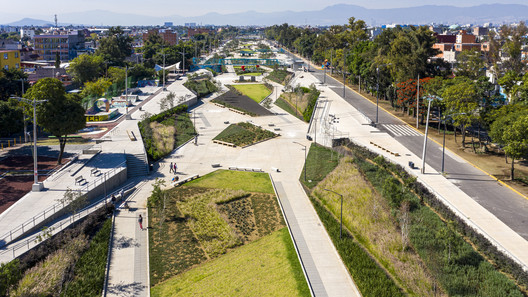 There are many different birds – all kinds of colors and sizes. It is a paradise for kids who are not afraid of birds and a paradise for people who want to take pictures of them like we did.
There are many different birds – all kinds of colors and sizes. It is a paradise for kids who are not afraid of birds and a paradise for people who want to take pictures of them like we did.
- Right after this picture, this little parrot hopped on the boy’s shoulder and was rewarded with ear-splitting, bone-chilling screams, as were we all!
- He got a better reaction from this lady from Georgia!
Beyond the aviary and the “mariposarium” there is a lookout tower with a fantastic view. It is quite a hike UP (a steep hill and then lots of stairs) but the view from the top is worth the exertion.
Gerry and I decided to walk back down to the parking lot. That was not such a brilliant decision since the maps are TERRIBLE! The map they gave us was about 4″ x 4″ and reproduced at such low quality that you could not use it for anything. As a result, we tried to do the route from memory after studying the boards that are up in the park. I’d love to go back and check their accuracy – we got lost twice. Both times we had to backtrack a good distance to get to a place that could get us back on the “right” course. We eventually made it, but if you’re not the type who likes to wander through the forest, it is best to wait for the trolley/train and ride back down.
I’d love to go back and check their accuracy – we got lost twice. Both times we had to backtrack a good distance to get to a place that could get us back on the “right” course. We eventually made it, but if you’re not the type who likes to wander through the forest, it is best to wait for the trolley/train and ride back down.
- View of San Juan (See El Morro at the far left?)
- Found during our forest wander ...
I really like to be a cheerleader for the local initiatives to provide visitors with something to do other than sit on a beach – Puerto Rico is so much more than that! However, until this park gets its act a little more together, I can only suggest it now as a place to take kids or as a place to walk for exercise. I’ll keep you posted in future visits – and hopefully be able to change my mind or recommend the best time of year to go.
- A gorgeous view of the hills around Guaynabo, too.
 It makes you feel like you’re way out in the center of the island.
It makes you feel like you’re way out in the center of the island.
Like this:
Like Loading…
36 best sights of Tenerife – description and photos
The Canary Islands are an archipelago of seven islands. Tenerife is a bright, slightly daring and very majestic lady in this family. This island, like all the Canary Islands, is a very popular tourist destination: more than 10 million visitors from all over the world come here every year. Many are attracted by the active nightlife of the island, its sandy beaches and all-inclusive resorts.
But take a step outside of this tourist monotony and you will get to know Tenerife from a different side. You will see that this is a cultural and civilized island, full of interesting and unusual things. Today we will tell you about the most diverse attractions of Tenerife. Photos and descriptions of these amazing places will make you realize that traveling many thousands of kilometers is not worth living in a “star” hotel for a few days. nine0003
nine0003
Church of the Immaculate Conception of the Blessed Virgin Mary
Church of the Immaculate Conception of the Blessed Virgin Mary. | Photo: wikimedia.
While in Santa Cruz de Tenerife, it’s hard not to notice the striking bell tower of the city’s oldest church. The current church was built in the 17th-18th centuries, but by that time there was already a sanctuary built in 1498 on this site, i.e. immediately after the conquest of the island by the Europeans.
The church boasts beautiful wooden Mudéjar ceilings (an architectural style influenced by Muslim craftsmen in medieval Spain). However, its main value, stored in the center of the silver altar, is Santa Cruz de la Conquista – the Holy Cross of Conquest, dating from 1494 years old and gave the city its name.
Address: Iglesia La Concepción, Plaza de la Concepción, 10, 38201 San Cristóbal de La Laguna, Santa Cruz de Tenerife, Spain.
Museum of Nature and Man
Museum of Nature and Man. | Photo: wikimedia.
| Photo: wikimedia.
One of the main attractions of the city of Santa Cruz de Tenerife and, perhaps, the best museum in the Canary Islands is the Museum of Nature and Man, located in the former building of the civil hospital, which acquaints its visitors with the natural wealth of the region and the archaeological finds made on the island. nine0003
The main highlight of the museum’s collection, of course, are the mummies of the Guanches – the indigenous inhabitants of Tenerife. Their faces, dried up to the acquisition of distorted and grotesque expressions, invariably make museum visitors freeze for a while and think about something.
Address: MUNA, Museo de Naturaleza y Arqueología, Calle Fuente Morales, s/n, 38003 Santa Cruz de Tenerife, Spain.
TEA Arts Center
TEA Arts Center. | Photo: Jose Mesa / Flickr.
The highlight of this magnificent modern building is the exhibition space, which combines three large and bright galleries.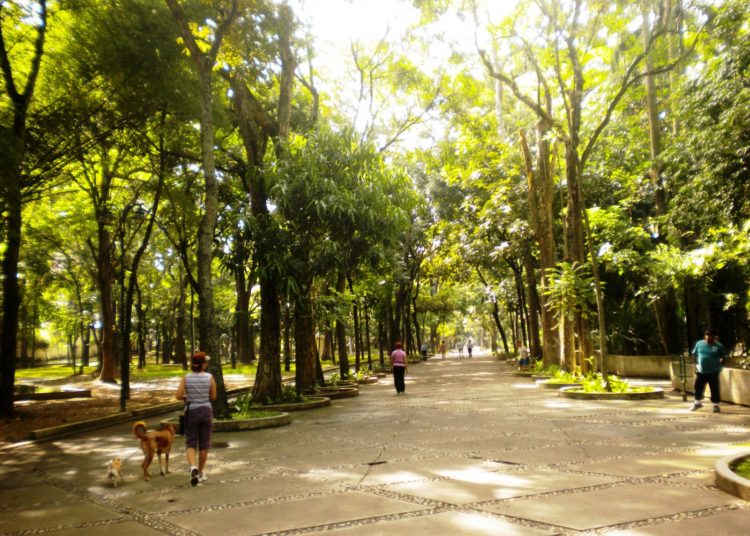 Don’t miss the permanent exhibition of paintings and audio-visual exhibits dedicated to the life and work of Oscar Domínguez, a native of Tenerife who, along with Juan Miró and Salvador Dalí, is considered one of the most important Spanish surrealist artists. nine0003
Don’t miss the permanent exhibition of paintings and audio-visual exhibits dedicated to the life and work of Oscar Domínguez, a native of Tenerife who, along with Juan Miró and Salvador Dalí, is considered one of the most important Spanish surrealist artists. nine0003
TEA often hosts temporary exhibitions of works by young but promising Spanish artists reflecting hot contemporary themes.
Address: Centro De Fotografía Isla, Av. de San Sebastián, 8, 38003 Santa Cruz de Tenerife, Spain.
The best excursions in Tenerife:
Auditorio de Tenerife
Auditorio de Tenerife.
The building of this magnificent concert hall in the form of a billowing white wave was designed by the world famous Spanish architect Santiago Calatrava. The Auditorio de Tenerife is often compared to the Sydney Opera House: the same unusual design solution, the same smooth lines, the same grandeur…
The main concert hall of the Canary Islands also boasts excellent acoustics. By joining one of the tour groups, you can be behind the scenes of this wonderful temple of culture.
By joining one of the tour groups, you can be behind the scenes of this wonderful temple of culture.
Address: Auditorio de Tenerife Adán Martín, Av de la Constitucion, 1, 38003 Santa Cruz de Tenerife, Spain.
Forestal Rope Park
Forestal Rope Park.
The thrilling Forestal Park adventure park is without a doubt the best family attraction in the Canary Islands (at least the ones that are located away from the water). This sports and entertainment complex offers a wide range of zip-lines, bungee rides, rope ladders, and treetop trails. nine0003
Routes vary in difficulty. The longest zip line downhill is 230 meters long, a record for Canarian parks. If you are not a fan of extreme sports, you can find a more relaxing pastime here, for example, just take a walk in the park, enjoying the beauty of the pine forest. Forestal Park is located in close proximity to the Teide National Park.
Address: Forestal Park, Ctra. TF-24, Km 16, 38290 Las Lagunetas, Santa Cruz de Tenerife, Spain.
TF-24, Km 16, 38290 Las Lagunetas, Santa Cruz de Tenerife, Spain.
Siam water park
Siam water park. | Photo: Alberto Varela / Flickr.
The largest theme park in Tenerife – Siam Park – is very popular among tourists who come to the island. The park is decorated in Thai style (hence its name). There are water attractions for people of all ages, as well as a huge wave pool, a sandy beach and a mile-long “lazy” river.
To experience the thrill, go to the Tower of Power attraction: when descending an almost vertical slide 28 meters high, speeds up to 80 km / h, and at the end of this path you “fly” through a pool full of sharks – you must admit, entertainment is not for the faint of heart. Of course, the best time to visit the water park is during the hot summer months. nine0003
Address: Siam Park, Av. Siam, s/n, 38660 Costa Adeje, Santa Cruz de Tenerife, Spain.
Botanical Garden
Botanical Garden. | Photo: John6536 / Flickr.
Tenerife’s magnificent botanical garden, founded in 1788, has thousands of plant species brought here from all over the world. In addition to the main collections of tropical and subtropical plants, here you can see a wide variety of palm trees, a fragrant herb garden, as well as a giant 200-year-old Australian eucalyptus. You won’t find a better place to spend the evening breathing in the scent of roses. nine0003
Address: Jardín Botánico, Calle Retama, 2, 38400 Puerto de la Cruz, Santa Cruz de Tenerife, Spain.
Risco Belle Water Gardens
Risco Belle Water Gardens. | Photo: Till Krech / Flickr.
Risco Belle is not just some old Victorian garden. Look there and you will be greeted by a wide lawn, citrus trees and exotic tropical plants such as strelitzia, commonly called “birds of paradise”, and poinsettias.
For a small fee, you can also go to the ponds, where you will have the opportunity to admire herons, swans, ducks, fish and other animals. Just sit on a bench and calmly contemplate. A cafe is located in the historical building located on the territory of the park. nine0003
Just sit on a bench and calmly contemplate. A cafe is located in the historical building located on the territory of the park. nine0003
Address: Risco Bello, Ctra. Taoro, 15, 38400 Puerto de la Cruz, Santa Cruz de Tenerife, Spain.
Museum House with balconies
Museum House with balconies.
Built in 1632, this sumptuous mansion houses historic photographs and a wide variety of interesting items in its splendid rooms. In one of the rooms there is a shop with lace and other local handicrafts. There is also a wine cellar with an original Lagar wine press (be sure to try the banana liqueur!). nine0003
Address: Casa de los Balcones, Calle San Francisco, 3, 38300 La Orotava, Santa Cruz de Tenerife, Spain.
Gardens of Marquesado de la Quinta Roja
Gardens of Marquesado de la Quinta Roja. | Photo: wikimedia.
These eighteenth-century gardens, also known as the Victoria Gardens, cascade down a hillside topped by a relatively small marble mausoleum built as a tomb for the then owner of the gardens, the Marquis de La Quinta Roja.
However, when he died, the Marquis’s wife and mother decided to bury him elsewhere. As a result, the crypt was not used for its intended purpose, and no one knows what (or who) is inside.
Address: Jardínes del Marquesado de la Quinta Roja, Plaza de la Constitución, s/n, 38300 La Orotova, Santa Cruz de Tenerife, Spain.
Tenerife History Museum
Tenerife History Museum.
The expositions of the Museum of the History of Tenerife tell about different periods of the life of the island. Here you will see many interesting documents, maps, artifacts and descriptions. Don’t miss the two magnificent 18th and 19th century carriages housed in a separate exhibition space at the rear of the museum. nine0003
No less interesting is the museum building itself – a 16th-century mansion, notable for its skillfully carved wooden gallery and beautiful courtyard.
Address: Museo de la Historia, Calle San Agustín, 22, 38201 San Cristóbal de La Laguna, Santa Cruz de Tenerife, Spain.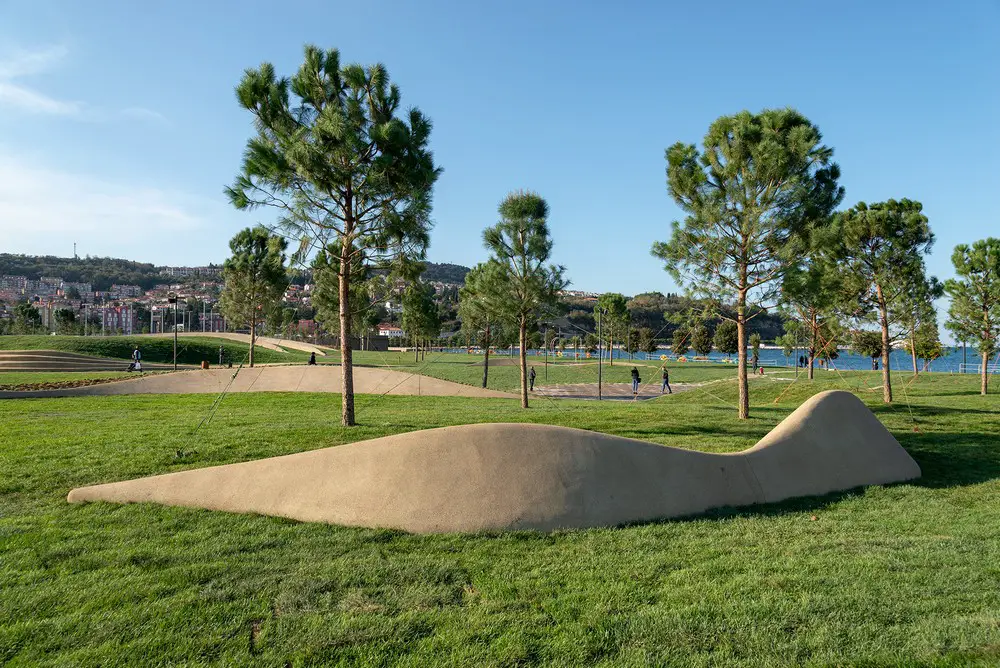
Teide Volcano
Teide Volcano.
The easiest way to get to the top of Mount Teide is to use the cable car that leads there. If you choose this path, you will have the most magnificent view during your ascent (unless, of course, a large cloud covers the top of the mountain, otherwise you will not see anything). nine0003
On clear days, you can admire the valley below the volcano and even see the islands of La Gomera, La Palma and El Hierro, “peeping out” from the Atlantic. The ascent by cable car to a height of 1200 m takes only eight minutes.
A few words of warning: if you have heart or lung problems, you’d better refrain from climbing to the top, as there is a noticeable lack of oxygen in the clouds. Keep in mind that it is quite chilly in the mountains, so whatever the weather is below, take a jacket with you. nine0003
The cable cars, each with a capacity of about 35 passengers, leave every 10 minutes. It is better to arrive at the lift before noon, because during peak hours you can queue for an hour or even two! Last descent at 5 pm.
Address: Pico del Teide, 38300 Santa Cruz de Tenerife, Spain.
Rocks de Garcia
Rocks de Garcia.
A few kilometers south of Teide is the Roques de Garcia, a geological ensemble of intricately twisted lava rocks. These rock formations are the result of the erosion of old volcanic “dams” or vertical magma flows and have names such as “God’s Finger” and “Cathedral”. nine0003
The strangest and therefore the most interesting of the rocks is Sinchado. To the west of the Garcia cliffs lies the Llano de Ucanca plain, covered with volcanic sand, with absolutely unearthly landscapes.
Address: Roque Cinchado, 38300, Santa Cruz de Tenerife, Spain.
Loro park
Loro park.
Traveling in Tenerife, you will see the flag of Loro Park almost everywhere. It is so common that you might even think that this park sponsors the island. But we will forgive this intrusiveness, because the park is really wonderful. nine0003
nine0003
Where else can you see more than 350 species of parrots at the same time (the largest collection in the world!)? Today, not only parrots live here, but also tigers, gorillas and chimpanzees. There is also a dolphinarium in Loro Park, where killer whales and dolphins perform in daily shows.
It is not clear whether to be happy about this or upset, because studies have shown that captivity is debilitating and stressful for these creatures.
Address: Loro Parque, Av. Loro Parque, s/n, 38400 Puerto de la Cruz, Santa Cruz de Tenerife, Spain. nine0003
Pico Viejo Volcano
Pico Viejo Volcano.
Pico Viejo means “old peak” in Russian. However, calling this mountain “old” is not entirely correct, given that in fact this volcano is the most recent one that erupted in Tenerife. In 1798, its southwestern slope split, resulting in a 700-meter fault.
Today you can clearly see the place where the magma “soared” into the air more than 1000 m and fell to the ground in disorderly heaps. Flows of lava flowing from the second, lower fissure solidified on the slopes of the mountain. nine0003
Flows of lava flowing from the second, lower fissure solidified on the slopes of the mountain. nine0003
Address: Pico Viejo, 38300 Santa Cruz de Tenerife, Spain.
Drago Park
Drago Park. | Photo: John6536 / Flickr.
Drago Park is located in the city of Icod de los Vinos, behind the Constitution Square, which is lined with historic Canarian houses. It is in this park that you can see the pride of the island – a tree that is considered the largest and oldest dragon tree in the world (it has been standing here supposedly for more than 1000 years).
Address: Parque Del Dragó, 38430 Icod de los Vinos, Santa Cruz de Tenerife, Spain.
Teide Observatory
Teide Observatory. | Photo: Victor R. Ruiz / Flickr.
The Teide Observatory is one of the best places in the northern hemisphere for stargazing. Astronomers from all over the world come here to conduct scientific research. You can take a free tour of the observatory and even look at the sky through the giant telescopes placed here from December to March. nine0003
nine0003
Address: Observatorio del Teide, 38205 San Cristóbal de La Laguna, Santa Cruz de Tenerife.
Sitio Litre Gardens
Sitio Litre Gardens. | Photo: Julie anne Johnson / Flickr.
This delightful English-style garden features exquisitely laid paths, fountains, tropical and subtropical plants and flowers. Here grows the oldest dragon tree in the city of Puerto de la Cruz.
The highlight of this place are orchids, of which there are many (that is why the Sitio Litre garden, named after the first owner, is often called the orchid garden). There is a cozy cafe on the terrace and a gift shop (surprisingly tasteless, I must say). The history of the creation of this garden can be found in the free booklet that you will receive at the entrance. nine0003
Address: Jardines Sitio Litre, Camino Sitio Litre, S/N, 38400 Puerto de la Cruz, Santa Cruz de Tenerife, Spain.
Palmetum Park
Palmetum Park. | Photo: Palmetum Santa Cruz / Flickr.
Opened in 2013 on the site of a former city dump, this 12-hectare botanical garden has Europe’s largest collection of palm trees brought here from all over the world. A detailed map of the park and signs installed throughout help identify the trees growing here. nine0003
The centrally located octagonal transparent canopy, whose walls are decorated with volcanic rocks and waterfalls, creates a special microclimate with high humidity: this place is designed to accommodate more delicate species, including palm trees from the Yucatan.
Palmetum is great for relaxing, leisurely walks. Thoughtfully placed benches allow you to combine relaxation with the contemplation of a magnificent view of the sea.
Address: Palmetum, Av la Constitución, 5, 38005 Santa Cruz de Tenerife, Spain. nine0003
Museum of Fine Arts
Museum of Fine Arts. | Photo: Jose Mesa / Flickr.
The excellent Museum of Fine Arts, founded in 1900 and formerly part of the adjoining church (check out the fabulous stained glass windows!), has an eclectic collection of paintings by predominantly Spanish, Canarian and Flemish artists, including Ribera, Sorolla and Brueghel.
There are also sculptures here, including works by Rodin. The paintings of the Spanish painter Manuel Villegas Brieva with their grandiose battle scenes make a special impression on the visitors of the museum. Please note that the galleries are only accessible by stairs, as there is no elevator in the building. nine0003
Address: Museo Municipal de Bellas Artes, Calle José Murphy, 12, 38002 Santa Cruz de Tenerife, Spain.
Museum of St. Clara’s Monastery
Courtyard of the Museum of St. Clara’s Monastery.
Of all the monasteries of La Laguna, this one is the most interesting. Its building is famous for its beautiful wooden balconies and covered galleries. The nine rooms that the museum occupies display some of the most valuable works of art and artifacts from the monastery’s collection, including a magnificent 18th-century silver altarpiece. nine0003
A ten-minute audio-visual presentation (in English and Spanish) tells the fascinating history of the convent from 1547, when it was founded by ten Franciscan nuns.
Address: Museo de Santa Clara Arte Sacro, Calle Viana, 38, 38201 San Cristóbal de La Laguna, Santa Cruz de Tenerife, Spain.
Basilica of Candelaria
Basilica of Candelaria. | Photo: wikimedia.
This church, built in 1959, is located on the edge of the city center, next to the waterfront. On the square near the basilica, you can see another attraction of the city and the entire island – nine huge statues of Guanche warriors. nine0003
Every year on August 15, during the official celebrations of Our Lady of Candelaria, considered the patroness of the Canary Islands, the square next to the basilica is filled with pilgrims from all over the islands.
Address: Basílica de Nuestra Señora de Candelaria, Plaza de la Patrona de Canarias, 1, 38530 Candelaria, Santa Cruz de Tenerife, Spain.
Fort San Juan
Castillo de San Juan Bautista. | Photo: wikimedia.
The central part of the waterfront has recently undergone a major renovation, and now you can enjoy a pleasant walk, heading towards the squat 17th century Castillo de San Juan. nine0003
nine0003
Don’t let the name fool you – it’s more of a modest fortress than a castle. Stand in the shadow of this fort and reflect on its past when there was an active trade in African slaves.
Address: Castillo de San Juan, 38003 Santa Cruz de Tenerife, Spain.
Cathedral of San Cristobal de la Laguna
Cathedral of San Cristobal de la Laguna. | Photo: wikimedia.
The Cathedral of San Cristobal de la Laguna was completely rebuilt in 1913 year. Its beautiful baroque altarpiece is dedicated to Our Lady of Los Remedios, Our Lady of Healing, and dates back to the 16th century.
Other highlights of the cathedral include impressive paintings by Cristobal Hernandez de Quintana, one of the island’s leading artists of the 18th century, and a magnificent Carrara marble pulpit carved by the Genoese sculptor Pasquale Bocchiardo in 1762.
Address: Laguna Catedral, Calle Obispo Rey Redondo, 25, 38201 San Cristóbal de La Laguna, Santa Cruz de Tenerife, Spain. nine0003
nine0003
Lercaro House
Lercaro House. | Photo: wikimedia.
This 16th-century mansion is considered the most representative building built in the traditional style of the Canary Islands. Of particular note are the exquisite baroque wood carvings, including the splendid traditional balconies. The plant-filled courtyard now houses a restaurant, and part of the building is occupied by a decor store.
Address: Sede Casa Lercaro, 22, Calle San Agustín, 38201 San Cristóbal de La Laguna, Santa Cruz de Tenerife, Spain. nine0003
Church and former monastery of St. Augustine
Church and former monastery of St. Augustine. | Photo: wikimedia.
It is not possible to enter the ruined church of St. Augustine’s monastery today, but you can look through a crack in the wall at the cacti and other plants that have taken over the building.
The cloisters of the monastery, open to the public, are also filled with tropical plants and flowers, and therefore are probably the most beautiful in the city. The monastery houses a gallery of works by local artists. nine0003
The monastery houses a gallery of works by local artists. nine0003
Address: St Augustine’s Church, Calle San Agustín, 46-48, 38201 San Cristóbal de La Laguna, Santa Cruz de Tenerife, Spain.
Martianez Pools
Martianez Pools.
The huge salt lake Martianez, artificially created on the northern coast of Tenerife in the 1970s, is part of the modern entertainment complex of the same name. This holiday park features seven ponds of varying sizes, a series of sun terraces and scenic landscapes designed by Cesar Manrique, a well-known Canary Islands artist and architect. nine0003
Be sure to pay attention to the huge geyser, one of several interesting fountains located in Lago Martianez. The presence of restaurants, bars and cafes on the territory of the complex means that you and your children can happily spend the whole day here (and adults can return here at night to visit the underground casino).
Address: Lago Martianez, Av.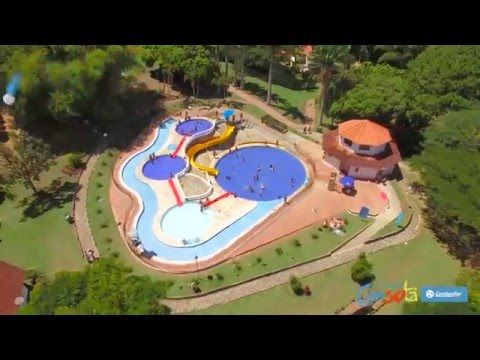 de Cristobal Colón, s/n, 38400 Puerto de la Cruz, Santa Cruz de Tenerife, Spain.
de Cristobal Colón, s/n, 38400 Puerto de la Cruz, Santa Cruz de Tenerife, Spain.
Monkey Park
Monkey Park. | Photo: Linda De Volder / Flickr.
The inhabitants of the monkey park are not only monkeys, of which there are as many as 20 species, but also lemurs, iguanas, crocodiles, turtles, snakes and other animals. Little visitors, as a rule, are delighted with everything they see. If you wish, you can treat the monkeys with dried fruits and nuts, which are sold right in the park.
But giving bananas to four-legged animals, oddly enough, is strictly prohibited. Despite the fact that this is a small zoo, the cages placed here are by no means cramped, and the animals are treated well here. The park has a breeding center for endangered primates. nine0003
Address: Zoo Tenerife Monkey Park, Camino Moreque-Llano Azul, 17, 38627 Los Cristianos, Santa Cruz de Tenerife, Spain.
Museum of Science and Space
Museum of Science and Space.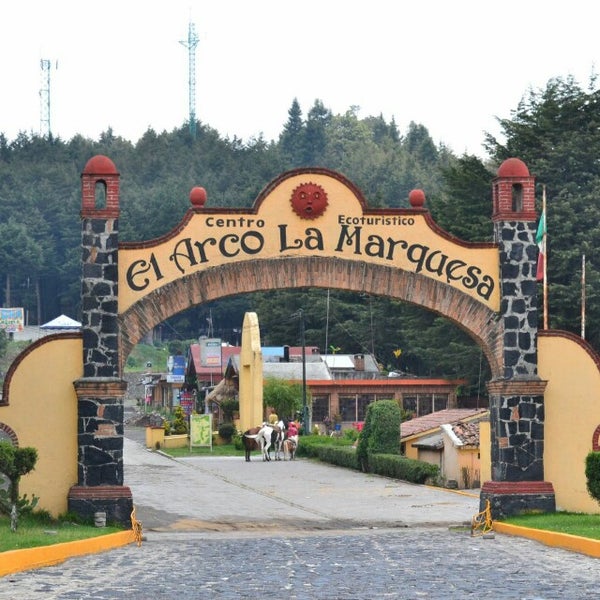 | Photo: Wojtek Gurak / Flickr.
| Photo: Wojtek Gurak / Flickr.
If you enjoy pushing buttons and pondering the great mysteries of nature and the universe, if you were a “why-why” as a child and still are, then you will want to linger longer in this museum, which introduces key scientific concepts in an exciting and compelling way. think form. nine0003
There is even a planetarium in the Museum of Science and Space, so you will never be bored. In general, this place can be safely called the best and what is worth seeing in Tenerife if you went on vacation with teenage children.
Address: Museo de la Ciencia y El Cosmos, Av. de los Menceyes, 70, 38205 San Cristóbal de La Laguna, Santa Cruz de Tenerife, Spain.
Los Gigantes massif
Los Gigantes massif.
If you head southwest of the island, you won’t want to miss Los Gigantes, a magnificent array of vertical sheer cliffs along the coastline. “Giants” cover a long stretch of the west coast and reach an altitude of more than 600 meters above sea level. nine0007
nine0007
This wonder of nature is best viewed from the resort town of the same name, which still manages to maintain an exceptional atmosphere, probably due to its lack of high-rise buildings.
However, you can admire the majestic rocks from different places: from the observation deck located on the way to the city, from the black sand beach sandwiched between the sea and the rocks, from the sea during one of the popular whale and dolphin watching excursions, or even from above , during a helicopter tour. nine0003
Address: Los Gigantes, Calle las Adelfas, 53, 38683 Santiago del Teide, Santa Cruz de Tenerife, Spain.
Mask Valley
Mask Valley. | Photo: Raico Rosenberg / Flickr.
The wild scenery of the Masca Valley, with its steep rocky cliffs, forest paths and flowing waterfalls, is one of the most beautiful in Tenerife. In the upper part of the Maska Gorge, at an altitude of about 600 meters, there is a village of the same name, aptly nicknamed the “lost village”. nine0003
nine0003
You can get there by a steep winding road. Those who were able to overcome this difficult path will have a breathtaking view of the valley. From the village of Masca to the seashore, there is a popular 5-kilometer hiking trail that runs along the bottom of the gorge, past hidden caves, lagoons and black sand beaches.
Address: La Masca, 38489 Masca, Santa Cruz de Tenerife, Spain.
Orotava Valley
View of the Orotava Valley. | Photo: wikimedia.
The Orotava Valley, nestled in the shadow of the Teide volcano and framed by the sloping peaks of the Teide mountains, will offer you some of the most picturesque scenery in Tenerife. With its lush banana plantations and vineyards, steep cliffs and pine-covered mountains, this valley is the best for hiking, and there are indeed a number of well-known trails running through it. nine0003
Among the sights of Orotava are the Mirador del Humboldt observation deck, which offers a magnificent panoramic view of the valley, the historic city of La Orotava, famous for its unique architecture and botanical gardens, the beaches of El Bollullo, Martin Alonso and El Rincon with volcanic sand.
Address: Valle de la Orotava, Santa Cruz de Tenerife, Spain.
Anaga mountain range
Anaga mountain range. | Photo: Patrick Muller / Flickr. nine0002 This picturesque mountain range is one of the oldest natural landscapes on the island. It was formed over 7 million years ago as a result of volcanic activity. Today Anaga is an officially recognized biosphere reserve and protected natural park.
It is home to many native plant species found only in the area and is considered the most biodiverse forest in all of Europe. The mountain range attracts many tourists from all over the world. Several paths wind through its forests leading to different parts of Anaga. nine0003
The high points of the hiking trails offer beautiful views of the coastline. Along the way, you will come across many small streams and lakes that complete the landscape.
Address: Macizo de Anaga, 38139 Las Casas de la Cumbre, Spain.
Caldera Volcanic Crater
Caldera Volcanic Crater. | Photo: El Coleccionista de Instantes Fotografía & Video / Flickr.
| Photo: El Coleccionista de Instantes Fotografía & Video / Flickr.
Caldera is a volcanic crater located in the Orotava Valley, which covers the northern part of the central coast of the island. La Orotava abounds not only in beautiful landscapes, but also in hiking trails, including around the Caldera. Getting to the Caldera crater is very easy. nine0003
In addition, all conditions for a comfortable stay are created here: there are picnic tables, a playground and even a restaurant. But still, this forest wonderland attracts lovers of active pastime more. You will probably want to follow the hiking trails, especially the loop that surrounds the crater and goes further into the mountains.
One of the options available to you is a 3-hour tour that starts in the recreation area, passes through mossy, fern-covered terrain and offers spectacular views of Tenerife. nine0003
GPS coordinates: 28.500007, -16.383334.
Las Vistas beach (Playa de las Vistas)
Las Vistas beach (Playa de las Vistas).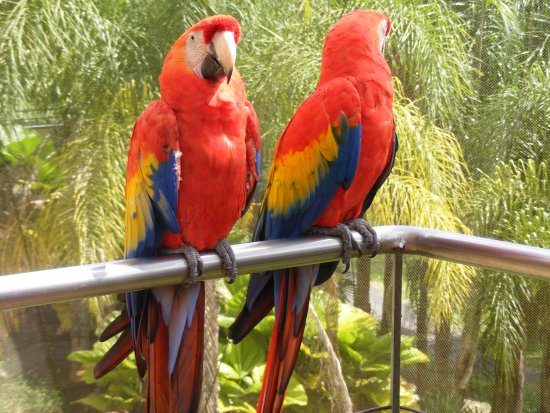 | Photo: wikimedia.
| Photo: wikimedia.
Many beaches in Tenerife are literally beckoning, but for some reason, a wide strip of golden sand on Las Vistas surpasses the rest in its popularity. The water in two coastal bays is especially calm and therefore good for swimming. A wide range of amenities are available to vacationers here: bright blue umbrellas and sun loungers, many bars, restaurants and shops, both on the beach itself and near it. nine0003
Address: Playa de Las Vistas, Paseo las Vistas, 38650 Arona, Santa Cruz de Tenerife, Spain.
Vilaflor village
View of Vilaflor village. | Photo: wikimedia.
Tenerife’s highest village, Vilaflor, is located on a rocky plateau in the foothills of the Teide National Park, at an altitude of 1400 m. This picturesque place is surrounded by pine-covered mountains, lava plains and meadows overgrown with grass and flowers. The village is famous for its vineyards and wineries. nine0003
Vilaflor is also the starting point of many popular hiking and climbing routes.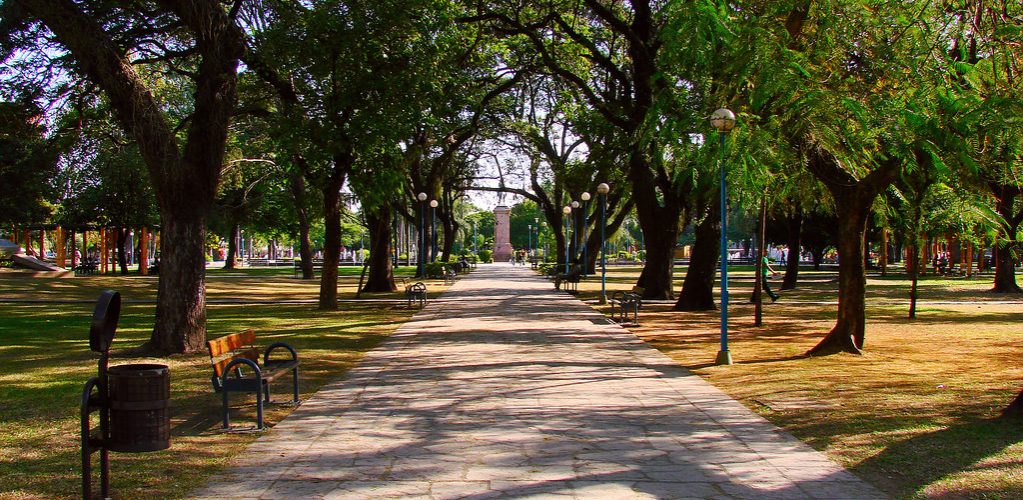 Among the sights that you will see when descending the hiking trails is the so-called “Lunar Landscape” – an unearthly lava valley in its appearance, where nature itself “sculpted” unusual rock formations from white tuff.
Among the sights that you will see when descending the hiking trails is the so-called “Lunar Landscape” – an unearthly lava valley in its appearance, where nature itself “sculpted” unusual rock formations from white tuff.
We advise you to visit the nearby Fuente Altam mineral springs and the sanctuary of Santo Hermano Pedro, as well as take a look at El Pino Gordo – the “fat pine” – the largest tree of the Canary Islands. nine0003
Address: Vilaflor, 38613 Vilaflor, Santa Cruz de Tenerife, Spain.
Tenerife attractions on the map
Best hotels in Tenerife
How do you like the selection?
Share with friends:
Pablo Neruda’s house – La Chascona, Pablo Neruda’s house, La Chascona
- Address: Fernando Márquez de La Plata 0192, Santiago, Providencia, Región Metropolitana, Chile;
- Website: fundacionneruda.org; nine0426
- Phone: +56 2 2777 8741;
- Opening hours: Tue.
 – Sun. from 10:00 to 18:00;
– Sun. from 10:00 to 18:00; - Ticket price: $4 ($1.5 for students upon presentation of ticket).
Poets, and creative people in general, have extraordinary thinking and a wide flight of thought. So was the beloved Chilean poet Pablo Neruda, who built an entire house to meet his beloved. Today it is one of the most famous museums in Santiago, where all tourists are brought – the house of Pablo Neruda “La Chascona”. It is located in the most fashionable and sophisticated area of the city – Bellavista.
nine0003
History of creation
The poet’s life resembles a novel – as soon as he returned from exile, he met and fell in love with Matilda Urrutia, who agreed to become his wife. But before the wedding, the lovers needed a place to meet. Being a local celebrity, Pablo had to watch his image. For this reason, in 1953 construction began on one of the most picturesque houses in Santiago. The name “La Chascone” from one Spanish dialect is translated as a naughty curl, just like that was in the hair of the poet’s beloved.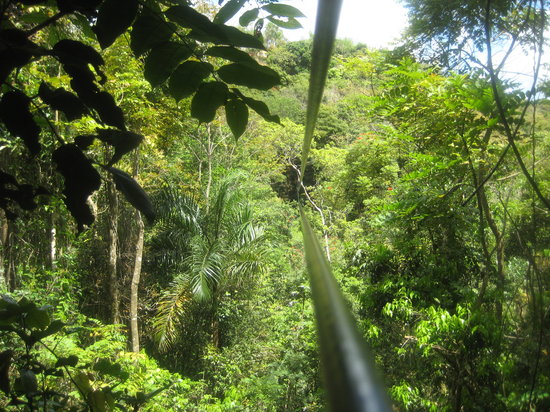 nine0003
nine0003
However, Matilda was not the only passion of the poet. His other great love, the sea, was embodied in the interior of the house. The living room resembles a lighthouse, and the dining room is an exact copy of the captain’s cabin. The walls are decorated with various paintings, one of which is the two-faced Matilda.
The fate of the love nest
During the military coup, the house was badly damaged, but the faithful companion of the poet was engaged in its restoration. Matilda looked after the love nest for many years after the death of her husband. nine0003
Tourists have a chance to see the huge library of the poet, a small bedroom in the tower. The exposition tells about twenty years of the poet’s life with his third wife. Wandering around the house will be interesting even for those who are not familiar with the work of Pablo Neruda, because the dwelling is a real labyrinth of rooms. The house “La Chascona” is also interesting for its architecture, because it literally crashes into the mountain of San Cristobal.
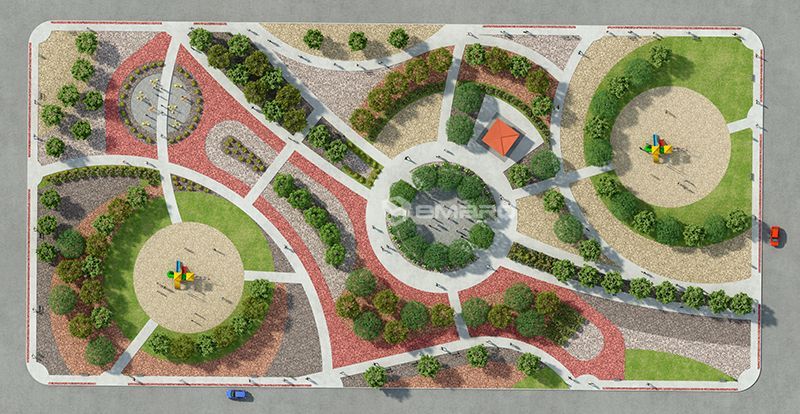 It makes you feel like you’re way out in the center of the island.
It makes you feel like you’re way out in the center of the island. – Sun. from 10:00 to 18:00;
– Sun. from 10:00 to 18:00;